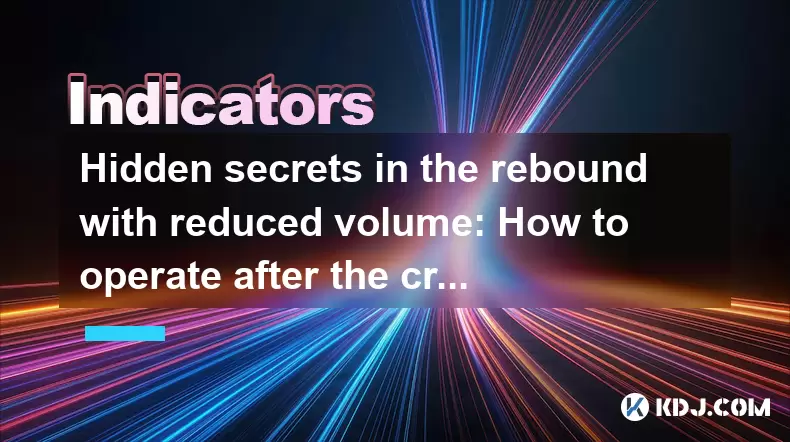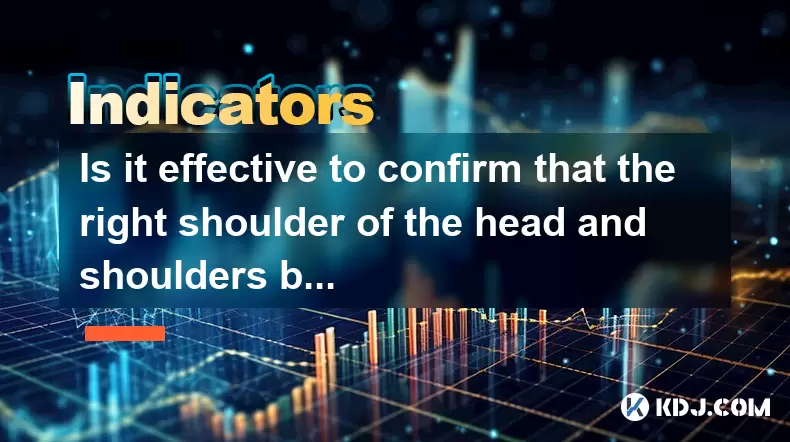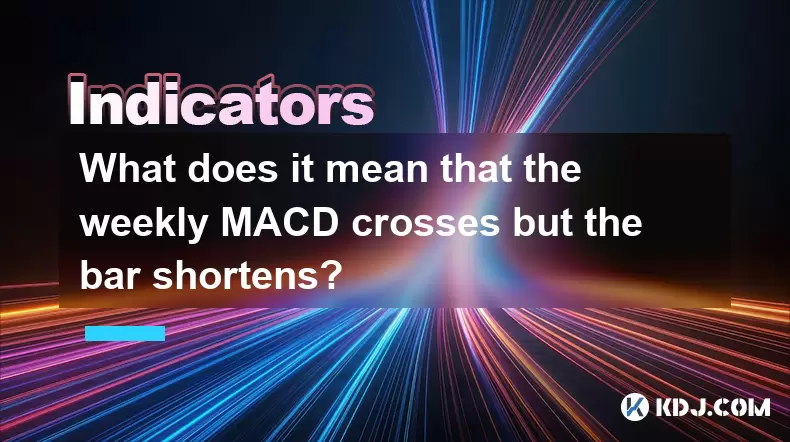-
 Bitcoin
Bitcoin $106,754.6083
1.33% -
 Ethereum
Ethereum $2,625.8249
3.80% -
 Tether USDt
Tether USDt $1.0001
-0.03% -
 XRP
XRP $2.1891
1.67% -
 BNB
BNB $654.5220
0.66% -
 Solana
Solana $156.9428
7.28% -
 USDC
USDC $0.9998
0.00% -
 Dogecoin
Dogecoin $0.1780
1.14% -
 TRON
TRON $0.2706
-0.16% -
 Cardano
Cardano $0.6470
2.77% -
 Hyperliquid
Hyperliquid $44.6467
10.24% -
 Sui
Sui $3.1128
3.86% -
 Bitcoin Cash
Bitcoin Cash $455.7646
3.00% -
 Chainlink
Chainlink $13.6858
4.08% -
 UNUS SED LEO
UNUS SED LEO $9.2682
0.21% -
 Avalanche
Avalanche $19.7433
3.79% -
 Stellar
Stellar $0.2616
1.64% -
 Toncoin
Toncoin $3.0222
2.19% -
 Shiba Inu
Shiba Inu $0.0...01220
1.49% -
 Hedera
Hedera $0.1580
2.75% -
 Litecoin
Litecoin $87.4964
2.29% -
 Polkadot
Polkadot $3.8958
3.05% -
 Ethena USDe
Ethena USDe $1.0000
-0.04% -
 Monero
Monero $317.2263
0.26% -
 Bitget Token
Bitget Token $4.5985
1.68% -
 Dai
Dai $0.9999
0.00% -
 Pepe
Pepe $0.0...01140
2.44% -
 Uniswap
Uniswap $7.6065
5.29% -
 Pi
Pi $0.6042
-2.00% -
 Aave
Aave $289.6343
6.02%
Hidden secrets in the rebound with reduced volume: How to operate after the cross star?
The cross star pattern signals market indecision and potential trend reversal in crypto, especially when followed by low volume.
Jun 15, 2025 at 11:21 pm

Understanding the Cross Star Pattern in Cryptocurrency Trading
The cross star is a crucial candlestick pattern that often appears during periods of market indecision. In cryptocurrency trading, where volatility reigns supreme, identifying this formation can provide valuable insights into potential reversals or consolidations. A cross star typically features a small body with long upper and lower shadows, indicating that neither buyers nor sellers could gain control during the trading period.
When a cross star emerges after a sustained price movement—whether upward or downward—it signals uncertainty among traders. This hesitation may foreshadow a change in trend direction. However, it’s essential to analyze the volume accompanying the cross star to determine the strength behind the potential reversal.
Key Takeaway: The cross star serves as a warning sign that momentum might be fading, especially when combined with declining volume.
Volume Reduction: What It Means After a Cross Star
A rebound accompanied by reduced volume after a cross star formation raises several questions for traders. Normally, a genuine price recovery should see an increase in volume, confirming that buyers are stepping in with conviction. When volume remains low, it suggests weak participation, which could lead to a false breakout or a failed rally.
In crypto markets, where pump-and-dump schemes are not uncommon, such patterns can easily mislead inexperienced traders. Volume analysis becomes even more critical in these scenarios. If the cross star forms at a key resistance or support level and is followed by a bounce on low volume, it may indicate that large players (whales) are manipulating the price without real demand backing it up.
Critical Insight: Always cross-check volume levels with technical indicators like RSI or MACD to filter out noise and confirm potential reversals.
Technical Indicators That Complement the Cross Star Signal
To better understand whether a cross star followed by a rebound on low volume is meaningful, traders must incorporate additional tools into their analysis. Here are some indicators that work well in tandem:
- Relative Strength Index (RSI): Helps identify overbought or oversold conditions. A cross star forming near 70 or 30 on the RSI scale increases the likelihood of a reversal.
- Moving Averages: Especially the 50 and 200-period EMA, can show whether the price is above or below key trend lines.
- Bollinger Bands: Useful for measuring volatility. A cross star touching the upper or lower band might signal a temporary reversal.
- Volume Oscillators: These help visualize changes in volume trends and can highlight divergences between price and volume.
Strategic Tip: Use multiple time frame analysis (MTF) to confirm if the cross star is valid across different chart intervals.
How to Operate After a Cross Star Appears
Operating effectively after spotting a cross star involves a combination of patience, strategy, and risk management. Here's how you can approach it step-by-step:
- Confirm the Pattern Across Time Frames: Check if the cross star appears on higher time frames like 4H or Daily charts. Patterns on higher time frames carry more weight.
- Observe Volume Behavior: If volume drops significantly during and after the cross star, consider it a red flag. Wait for confirmation before entering any trade.
- Set Clear Entry Points: Avoid entering immediately after the cross star closes. Instead, wait for the next candle to break key support or resistance levels confirmed by your indicators.
- Place Stop Losses Strategically: Position stop losses just beyond the high or low of the cross star candle to avoid being stopped out prematurely.
- Use Partial Profit Taking: If the trade moves in your favor, consider taking partial profits at Fibonacci extension levels or previous swing points.
Important Note: Never rely solely on one candlestick pattern. Always combine it with confluence from other sources like moving averages or trendlines.
Risks Involved in Trading the Cross Star Rebound
Trading based on the cross star and volume behavior comes with inherent risks, especially in the unpredictable world of cryptocurrencies. Some of the common pitfalls include:
- False Breakouts: Price may briefly move in one direction only to reverse sharply, trapping traders who entered early.
- Whale Manipulation: Large holders can cause sudden spikes or dips that mimic genuine patterns but lack underlying support.
- Emotional Decision-Making: Fear of missing out (FOMO) or panic selling can cloud judgment, leading to impulsive trades.
- Lack of Confirmation: Entering a trade without waiting for follow-through candles or indicator confirmation increases the chance of failure.
Risk Management Reminder: Always define your maximum acceptable loss per trade and stick to it rigorously.
Frequently Asked Questions
Q1: Can the cross star appear in both bullish and bearish scenarios?
Yes, the cross star is a neutral pattern that reflects indecision. Whether it leads to a bullish or bearish outcome depends on the surrounding context, including trend direction, support/resistance levels, and volume behavior.
Q2: How reliable is the cross star compared to other candlestick patterns?
While the cross star is a recognized pattern, its reliability increases when used alongside other technical tools. On its own, it may generate misleading signals, particularly in choppy or sideways markets.
Q3: Should I always wait for volume confirmation before acting on a cross star?
It is highly recommended to do so. Low volume following a cross star often indicates weak market sentiment and can result in false movements. Waiting for a stronger volume candle or a breakout can improve your chances of success.
Q4: Is the cross star effective on all cryptocurrency pairs?
The effectiveness of the cross star varies depending on the liquidity of the pair. Major pairs like BTC/USDT or ETH/USDT tend to produce more reliable patterns due to higher trading volumes and clearer price action.
Disclaimer:info@kdj.com
The information provided is not trading advice. kdj.com does not assume any responsibility for any investments made based on the information provided in this article. Cryptocurrencies are highly volatile and it is highly recommended that you invest with caution after thorough research!
If you believe that the content used on this website infringes your copyright, please contact us immediately (info@kdj.com) and we will delete it promptly.
- 2025-W Uncirculated American Gold Eagle and Dr. Vera Rubin Quarter Mark New Products
- 2025-06-13 06:25:13
- Ruvi AI (RVU) Leverages Blockchain and Artificial Intelligence to Disrupt Marketing, Entertainment, and Finance
- 2025-06-13 07:05:12
- H100 Group AB Raises 101 Million SEK (Approximately $10.6 Million) to Bolster Bitcoin Reserves
- 2025-06-13 06:25:13
- Galaxy Digital CEO Mike Novogratz Says Bitcoin Will Replace Gold and Go to $1,000,000
- 2025-06-13 06:45:13
- Trust Wallet Token (TWT) Price Drops 5.7% as RWA Integration Plans Ignite Excitement
- 2025-06-13 06:45:13
- Ethereum (ETH) Is in the Second Phase of a Three-Stage Market Cycle
- 2025-06-13 07:25:13
Related knowledge

How to interpret the low opening the next day after the long lower shadow hits the bottom?
Jun 18,2025 at 12:22am
Understanding the Long Lower Shadow Candlestick PatternIn technical analysis, a long lower shadow candlestick is often seen as a potential reversal signal in a downtrend. This pattern occurs when the price opens, trades significantly lower during the session, but then recovers to close near the opening price or slightly above. The long wick at the botto...

How to operate the RSI indicator repeatedly in the 40-60 range?
Jun 18,2025 at 12:56am
Understanding the RSI Indicator and Its RelevanceThe Relative Strength Index (RSI) is a momentum oscillator widely used in cryptocurrency trading to measure the speed and change of price movements. Typically, the RSI ranges from 0 to 100, with levels above 70 considered overbought and below 30 considered oversold. However, when the RSI repeatedly stays ...

How strong is the MACD golden cross below the zero axis?
Jun 17,2025 at 11:00pm
Understanding the MACD Indicator in Cryptocurrency TradingThe Moving Average Convergence Divergence (MACD) is one of the most widely used technical indicators among cryptocurrency traders. It helps identify potential trend reversals, momentum shifts, and entry or exit points. The MACD consists of three main components: the MACD line, the signal line, an...

How effective is the golden cross of the William indicator double line in the oversold area?
Jun 17,2025 at 11:56pm
Understanding the William Indicator and Its Double Line SetupThe William %R (Williams Percent Range) is a momentum oscillator used to identify overbought or oversold conditions in a market. It ranges from 0 to -100, with readings above -20 considered overbought and below -80 deemed oversold. The double line setup refers to plotting two different timefra...

Is it effective to confirm that the right shoulder of the head and shoulders bottom volume at the 30-minute level is enlarged?
Jun 17,2025 at 11:42pm
Understanding the Head and Shoulders Pattern in Cryptocurrency TradingThe head and shoulders pattern is one of the most recognized reversal patterns in technical analysis, especially within cryptocurrency trading. It typically signals a potential shift from a bullish trend to a bearish one. This pattern consists of three peaks: the left shoulder, the he...

What does it mean that the weekly MACD crosses but the bar shortens?
Jun 18,2025 at 01:07am
Understanding the MACD IndicatorThe Moving Average Convergence Divergence (MACD) is a popular technical analysis tool used in cryptocurrency trading to identify potential trend reversals and momentum shifts. It consists of three main components: the MACD line, the signal line, and the histogram (also known as the bar). The MACD line is calculated by sub...

How to interpret the low opening the next day after the long lower shadow hits the bottom?
Jun 18,2025 at 12:22am
Understanding the Long Lower Shadow Candlestick PatternIn technical analysis, a long lower shadow candlestick is often seen as a potential reversal signal in a downtrend. This pattern occurs when the price opens, trades significantly lower during the session, but then recovers to close near the opening price or slightly above. The long wick at the botto...

How to operate the RSI indicator repeatedly in the 40-60 range?
Jun 18,2025 at 12:56am
Understanding the RSI Indicator and Its RelevanceThe Relative Strength Index (RSI) is a momentum oscillator widely used in cryptocurrency trading to measure the speed and change of price movements. Typically, the RSI ranges from 0 to 100, with levels above 70 considered overbought and below 30 considered oversold. However, when the RSI repeatedly stays ...

How strong is the MACD golden cross below the zero axis?
Jun 17,2025 at 11:00pm
Understanding the MACD Indicator in Cryptocurrency TradingThe Moving Average Convergence Divergence (MACD) is one of the most widely used technical indicators among cryptocurrency traders. It helps identify potential trend reversals, momentum shifts, and entry or exit points. The MACD consists of three main components: the MACD line, the signal line, an...

How effective is the golden cross of the William indicator double line in the oversold area?
Jun 17,2025 at 11:56pm
Understanding the William Indicator and Its Double Line SetupThe William %R (Williams Percent Range) is a momentum oscillator used to identify overbought or oversold conditions in a market. It ranges from 0 to -100, with readings above -20 considered overbought and below -80 deemed oversold. The double line setup refers to plotting two different timefra...

Is it effective to confirm that the right shoulder of the head and shoulders bottom volume at the 30-minute level is enlarged?
Jun 17,2025 at 11:42pm
Understanding the Head and Shoulders Pattern in Cryptocurrency TradingThe head and shoulders pattern is one of the most recognized reversal patterns in technical analysis, especially within cryptocurrency trading. It typically signals a potential shift from a bullish trend to a bearish one. This pattern consists of three peaks: the left shoulder, the he...

What does it mean that the weekly MACD crosses but the bar shortens?
Jun 18,2025 at 01:07am
Understanding the MACD IndicatorThe Moving Average Convergence Divergence (MACD) is a popular technical analysis tool used in cryptocurrency trading to identify potential trend reversals and momentum shifts. It consists of three main components: the MACD line, the signal line, and the histogram (also known as the bar). The MACD line is calculated by sub...
See all articles

























































































